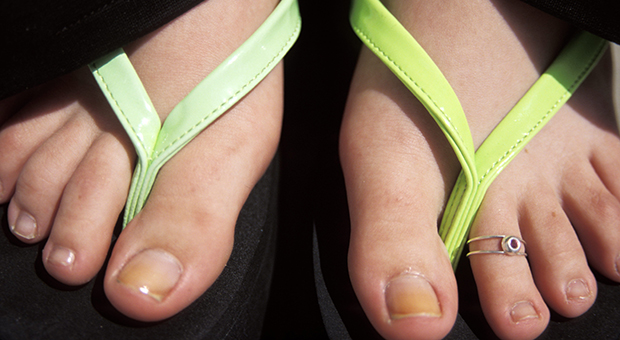The Medical Minute: Summer foot fashion doesn't always lead to foot health

With temperatures sizzling, we have long since shed our heavy clothing and boots, replacing them with as little clothing as possible. Unfortunately, this often includes flimsy flip-flops and sandals that can make soaking up the sun a lot less fun by causing pain and other unforeseen consequences.
According to Dr. Jarrett D. Cain, podiatric surgeon at Penn State Hershey Bone and Joint Institute, there are steps you can take to avoid unwanted stress on your feet.
Make better choices in footwear
Sandals that have a built in arch and heal support can be more feet-friendly than more traditional flip-flops.
“The thing about flips flops is they do not provide stability and support for feet,” Cain said. “Although a fashionable trend in the summertime, especially for women, they do come with some risks that can be overlooked. With an increase in activity comes increased stress to the structures of the foot.”
Sandals can aggravate pre-existing conditions like tendonitis and plantar fasciitis (acute heal pain) and cause new issues like lower back pain or a hammertoe deformity because the toes are not properly stabilized.
Some sneaker companies offer their own versions of summer footwear options but, according to Cain, many are “high on fashion, low on support.” He recommends sandals such as those made by Birkenstock that, according to the company website, mold to your feet.
Limit the amount of time you spend in flip-flops and sandals without support
“If you're going to go with flip flops, wearing for short periods of time may not be detrimental,” Cain said. “The longer you wear them, the more instability and increased stress to the foot can be caused.”
He suggests wearing flips-flops around the pool or at the beach, but not if you are going to be walking a lot or wearing them for long periods.
Take care of your footwear
Cain advises patients to allow their shoes to air out in the heat after wear and alternating shoes every other day to ensure they have dried.
When the porous materials get damp and moist and combine with sweaty feet, flip-flops can be incubators for virus and fungus that thrive in warm, moist environments.
“Once fungus gets into the nail bed, it can cause a dystrophic (misshapen) appearance of the nail, and that is not cosmetically appealing,” Cain said. Fungus can result in an infection entering the body through the bottom of the feet, resulting in athlete's foot.
Simple techniques, such as use of Lysol and allowing shoes to air out in summer sun, can be very effective in combating any of these microbes that can live in shoes indefinitely.
You can also combat fungus by changing your socks twice a day, especially when your feet are sweaty.
Don't share your shoes
Sharing footwear seems to be common among teenage girls and some women but unfortunately, there can be a little more sharing than you intend.
Cain said the practice is not hygienic and that the risk of exposure to virus and fungus can easily spread from one person to the other.
For more information, visit http://www.apma.org/Learn/TodaysPodiatrist.cfm?
The Medical Minute is a weekly health news feature brought to you by Penn State Milton S. Hershey Medical Center. Articles feature the expertise of Penn State Hershey faculty physicians and staff, and are designed to offer timely, relevant health information of interest to a broad audience.
If you're having trouble accessing this content, or would like it in another format, please email Penn State Health Marketing & Communications.
